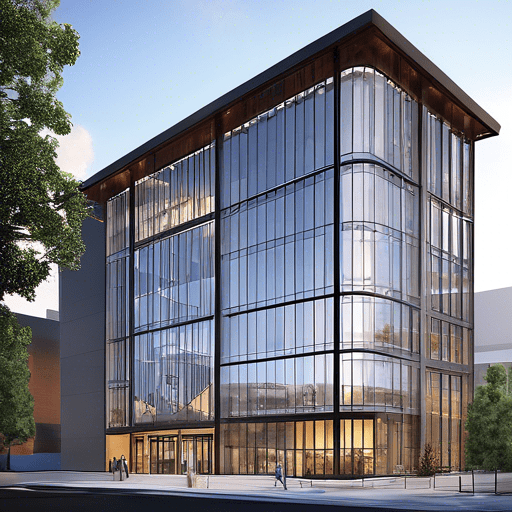Introduction HVAC systems play a very crucial role in ensuring the comfort of any residential or commercial building. So, if

Office spaces represent a dynamic environment where functionality and comfort are paramount. When it comes to MEP considerations, factors such as efficient lighting, air quality, and temperature control play a crucial role in creating a productive workspace. Designing an effective MEP system for office buildings involves evaluating the layout to optimize space utilization and ensure proper distribution of electrical and plumbing infrastructure.
Moreover, load capacity calculations are essential to support the power requirements of modern office equipment. By incorporating energy-efficient solutions like LED lighting and smart HVAC controls, businesses can not only reduce operating costs but also contribute to a more sustainable work environment. Collaboration with experienced MEP consultants is key to addressing these challenges and creating a workspace that meets the needs of occupants.
Incorporating flexible design elements allows for future scalability and adaptation to evolving technologies. By staying abreast of industry trends and regulatory requirements, office buildings can maintain a competitive edge while providing a comfortable and efficient working environment for employees.
Retail stores are characterized by their emphasis on visual appeal and customer experience. MEP considerations for retail spaces revolve around creating an inviting atmosphere that showcases products effectively. Lighting plays a critical role in highlighting merchandise and attracting shoppers, requiring a balance between functionality and aesthetics.
Incorporating lighting controls and zoning strategies can help create focal points within the store and guide customer flow. Additionally, HVAC systems must be designed to maintain a comfortable indoor environment while efficiently managing energy consumption. Customized MEP solutions tailored to the specific layout and branding of the store are essential for enhancing the overall shopping experience.
Furthermore, the integration of technology-driven systems such as digital signage and interactive displays can elevate the retail environment and engage customers on a deeper level. Collaboration between architects, designers, and MEP engineers is vital to harmonize the various elements and create a cohesive retail space that reflects the brand identity.
Restaurants present a unique set of challenges due to their high occupancy levels and specialized equipment requirements. MEP considerations for restaurants prioritize factors such as ventilation, plumbing, and kitchen layout to ensure a safe and efficient operation. Proper exhaust systems are essential to remove cooking fumes and maintain indoor air quality, complying with health code regulations.
The plumbing infrastructure must support the demands of a commercial kitchen, including grease trap installation and wastewater management. Balancing the energy requirements of cooking equipment with sustainable practices is key to optimizing operational costs and reducing environmental impact. Efficient MEP design can also contribute to the comfort of diners by regulating temperature and humidity levels effectively.
Collaboration with mechanical engineers and kitchen designers is crucial to integrating MEP systems seamlessly into the restaurant layout. By coordinating the placement of equipment and utilities, restaurants can maximize space efficiency and ensure a smooth workflow. Investing in quality MEP solutions not only enhances the dining experience but also establishes the foundation for long-term success in the food service industry.
Energy efficiency is a key priority in modern commercial building design, driven by cost savings and environmental sustainability goals. MEP systems play a significant role in achieving energy efficiency by optimizing the use of electricity, water, and HVAC resources. Implementing smart building technologies allows for real-time monitoring and control of energy consumption, leading to improved operational efficiency.
Strategies such as daylight harvesting, occupancy sensors, and high-efficiency equipment help reduce energy waste and lower utility bills. Renewable energy sources like solar panels can further augment the power supply and reduce reliance on traditional grid electricity. Sustainable practices not only benefit the bottom line but also enhance the overall value and marketability of commercial properties.
By prioritizing energy-efficient MEP solutions during the design phase, building owners can position their properties as environmentally conscious and attractive to tenants and investors. Continuous monitoring and optimization of MEP systems ensure long-term performance and compliance with evolving energy regulations.
Choosing the right MEP consultant is crucial to the success of any commercial building project. An experienced consultant brings expertise in designing and implementing MEP systems that align with the specific requirements and goals of the client. By conducting thorough assessments and feasibility studies, the consultant can provide valuable insights into optimizing the performance and functionality of MEP infrastructure.
Effective communication and collaboration between the project team and the MEP consultant are essential to ensuring seamless integration of MEP systems with architectural and structural elements. Transparency in project timelines, budget constraints, and performance expectations fosters a productive working relationship and minimizes potential conflicts during the construction phase. Regular site inspections and quality assurance measures help uphold the standards of MEP design and installation.
Furthermore, selecting a consultant with a track record of successful projects and industry certifications instills confidence in the quality of work delivered. By engaging a reputable MEP consultant, clients can benefit from innovative solutions, cost-effective designs, and reliable support throughout the project lifecycle.
In conclusion, addressing the unique challenges of office spaces, retail stores, and restaurants requires a tailored approach to MEP design and implementation. By understanding the specific needs of each commercial building type and integrating efficient solutions, businesses can create environments that promote productivity, enhance customer experience, and ensure operational success. Collaboration with experienced professionals and a focus on energy efficiency are key pillars in achieving sustainable and cost-effective MEP systems. Investing in quality MEP solutions not only adds value to commercial properties but also contributes to a greener and more resilient built environment. By prioritizing the right MEP considerations and hiring the right consultants, businesses can unlock the full potential of their commercial buildings and set a foundation for long-term success in the competitive market.
About Author
Xhuljo Jakup